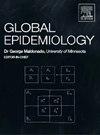Explainable artificial intelligence for predicting dengue outbreaks in Bangladesh using eco-climatic triggers
引用次数: 0
Abstract
Background
Dengue represents a significant public health threat in Bangladesh, characterized by its complex ecological transmission dynamics. To improve dengue prevention and control efforts, firstly, we employ state-of-the-art artificial intelligence (AI) methods to identify the roles of eco-climatic factors in predicting dengue outbreaks in Bangladesh.
Methods
We utilize high-performance machine learning (ML) models, XGBoost and LightGBM, combined with explainable AI (XAI) methodologies to evaluate the predictive performance and impact of various dengue determinants in Bangladesh from 2000 to 2023. The LightGBM and XGBoost models were also utilized to predict dengue cases and early warning trends from 2024 to 2030. Climatic, socio-demographic, and landscape features were used to train these models; SHapley Additive Explanations (SHAP) values and LIME (Local Interpretable Model-agnostic Explanations) were used to interpret the results.
Findings
Between 2000 and 2023, Bangladesh experienced the highest number of dengue cases in August, while November saw the most fatalities. The XGBoost model excelled in predicting dengue outbreaks, achieving an AUC score of 0.89, a Log Loss of 0.64. Key predictors identified by the model include population density, precipitation, temperature, and land-use patterns. Additionally, Local Interpretable Model-agnostic Explanations (LIME) provided insights into the model's predictions, highlighting the significance of population density, relative humidity, and minimum temperature in dengue outbreaks.
Interpretation
This study showcases the potential of XAI in uncovering the complexities of dengue outbreaks, providing a robust tool for public health interventions. Our AI-driven framework can be utilized to generate prompt and timely alerts to prevent imminent dengue and other infectious disease outbreaks.
利用生态气候触发器预测孟加拉国登革热疫情的可解释人工智能
登革热在孟加拉国是一个重大的公共卫生威胁,其特点是其复杂的生态传播动态。为了改善登革热预防和控制工作,首先,我们采用最先进的人工智能(AI)方法来确定生态气候因素在预测孟加拉国登革热疫情中的作用。方法利用高性能机器学习(ML)模型,XGBoost和LightGBM,结合可解释人工智能(XAI)方法,评估2000年至2023年孟加拉国各种登革热决定因素的预测性能和影响。利用LightGBM和XGBoost模型预测2024 - 2030年登革热病例和预警趋势。使用气候、社会人口和景观特征来训练这些模型;使用SHapley加性解释(SHAP)值和LIME (Local Interpretable Model-agnostic Explanations)来解释结果。在2000年至2023年期间,孟加拉国8月份的登革热病例最多,而11月份的死亡人数最多。XGBoost模型在预测登革热暴发方面表现出色,AUC得分为0.89,Log Loss为0.64。该模型确定的关键预测因子包括人口密度、降水、温度和土地利用模式。此外,局部可解释模型不可知解释(LIME)为模型预测提供了见解,强调了人口密度、相对湿度和最低温度在登革热暴发中的重要性。本研究展示了XAI在揭示登革热暴发复杂性方面的潜力,为公共卫生干预提供了强有力的工具。我们的人工智能驱动框架可用于产生迅速和及时的警报,以预防即将发生的登革热和其他传染病暴发。
本文章由计算机程序翻译,如有差异,请以英文原文为准。
求助全文
约1分钟内获得全文
求助全文

 求助内容:
求助内容: 应助结果提醒方式:
应助结果提醒方式:


